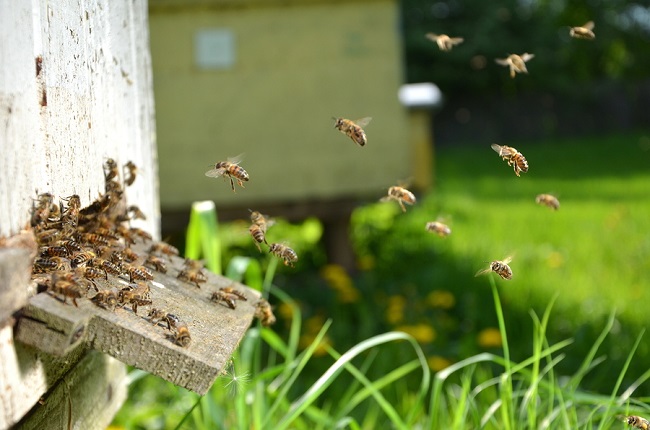- Make It Yourself Lavender Heart-Shaped Bath Bombs!
- 20 Things You Never Knew About “Down There”
- 12 Best Foods For Those Suffering From Arthritis Pain
- 12 Personal Hygiene Mistakes Almost Everyone Makes (Mom Never Told You About #4!)
- 15 Medicinal Plants And Herbs From The Cherokee People
- 12 Mind-Blowing Benefits Of Drinking Coconut Water During Pregnancy
- 12 Outstanding Winter Foods That Won’t Fatten You Up Like A Christmas Turkey
What To Do If You Get Stung By A Bee
For most people, getting stung by a bee is a minor inconvenience. It may have already gotten you by the time you even realize you have been stung. Usually, the most that will happen will be a sharp pain, a red mark on your arm (or wherever you have been stung), and a swollen itchy feeling to prove you have been stung by a bee.
Other people may have an allergic reaction to a bee sting and must seek medical care immediately. A bee sting to someone who is allergic to bees could cause the person to go into anaphylactic shock, which is very serious. If you end up with a swollen throat or tongue, an increased heartbeat, diarrhea, hives, trouble breathing, vomiting or nausea, or a loss of consciousness, go to an emergency facility immediately. For everyone else, there are things you can do to treat a bee sting, and keep yourself from getting stung in the future.
What to do if you are stung by a bee
- If you get stung by a honeybee, make sure to remove the stinger right away. Honeybees are the only kind of bees that lose their stingers and then die; other bees do not lose their stinger and are able to sting again.
- Apply honey to the bee sting area and then cover it with a loose piece of gauze or a bandage. Honey is a very good healing agent for the skin, especially when it comes to wounds or bruises.
- You can neutralize the venom from the bee by soaking the area with apple cider vinegar for about 15 minutes. If it is easier, you can soak a piece of gauze or a bandage in the vinegar and then attach it to the area you were stung.
- Another way you can calm the sting site is by making a paste out of baking soda and rubbing it right onto the area. Put a bandage over the paste and let it sit for about 15 minutes. You can do this as many times as you need to.
- Meat tenderizer contains an ingredient named papain which will begin to break down any protein from the sting that is still causing any itching or pain. Mix the meat tenderizer with four parts of water and keep it on the sting site for about 30 minutes.
- There are a number of essential oils and herbs that can be applied directly to the sting and will help reduce the pain and stinging of the area. The oils and herbs include: Aloe Vera, tea tree oil. Witch Hazel, lavender, and calendula cram.
- Believe it or not, creating a paste out of any mud you can find outdoors will help you get rid of the pain and swelling that comes from a bee sting. Just gather up some dirt and wet it, or if you can find some mud it’s easier. Apply the mud to the area where you were stung, and let it sit for a while so that it can draw out any impurities.
- You can get rid of any itching or swelling by applying a thin layer of baking soda made into a paste with a little bit of water. You can top it off with a bandage to help it heal faster.
- Gather up a handful of ice cubes and put them in a piece of cloth. Hold the cloth on the sore area for about 15 minutes. This should help to bring any redness or swelling down.
- Calamine lotion is an over-the-counter product that is often used to relieve the symptoms of being exposed to poison ivy or poison sumac. Apply some of this lotion to your bee sting and you should be able to experience a faster healing than with most other products.
- Believe it or not, many people swear by applying toothpaste to a bee sting. Dab on a small amount and it should actually cool down the area right away. It is something you already have on hand, so you have nothing to lose.
- Always have an Epinephrine pen on hand if you or anyone you know has had a previous allergic reaction. Just having it close by could be a lifesaver to someone whose throat may be closing up due to the allergy. It is a small price to pay to help someone who needs relief right away.
Continue to Page 2


































